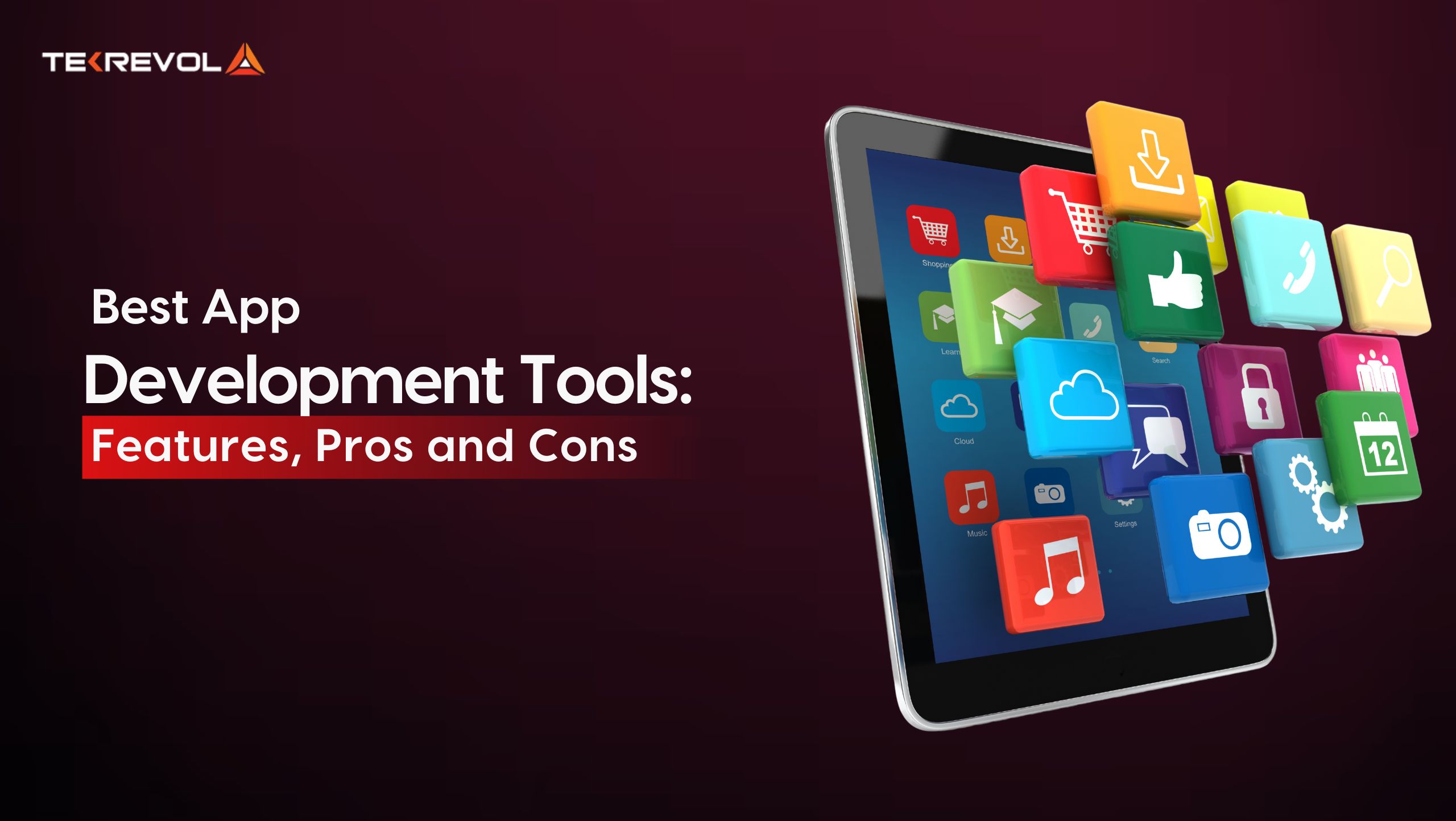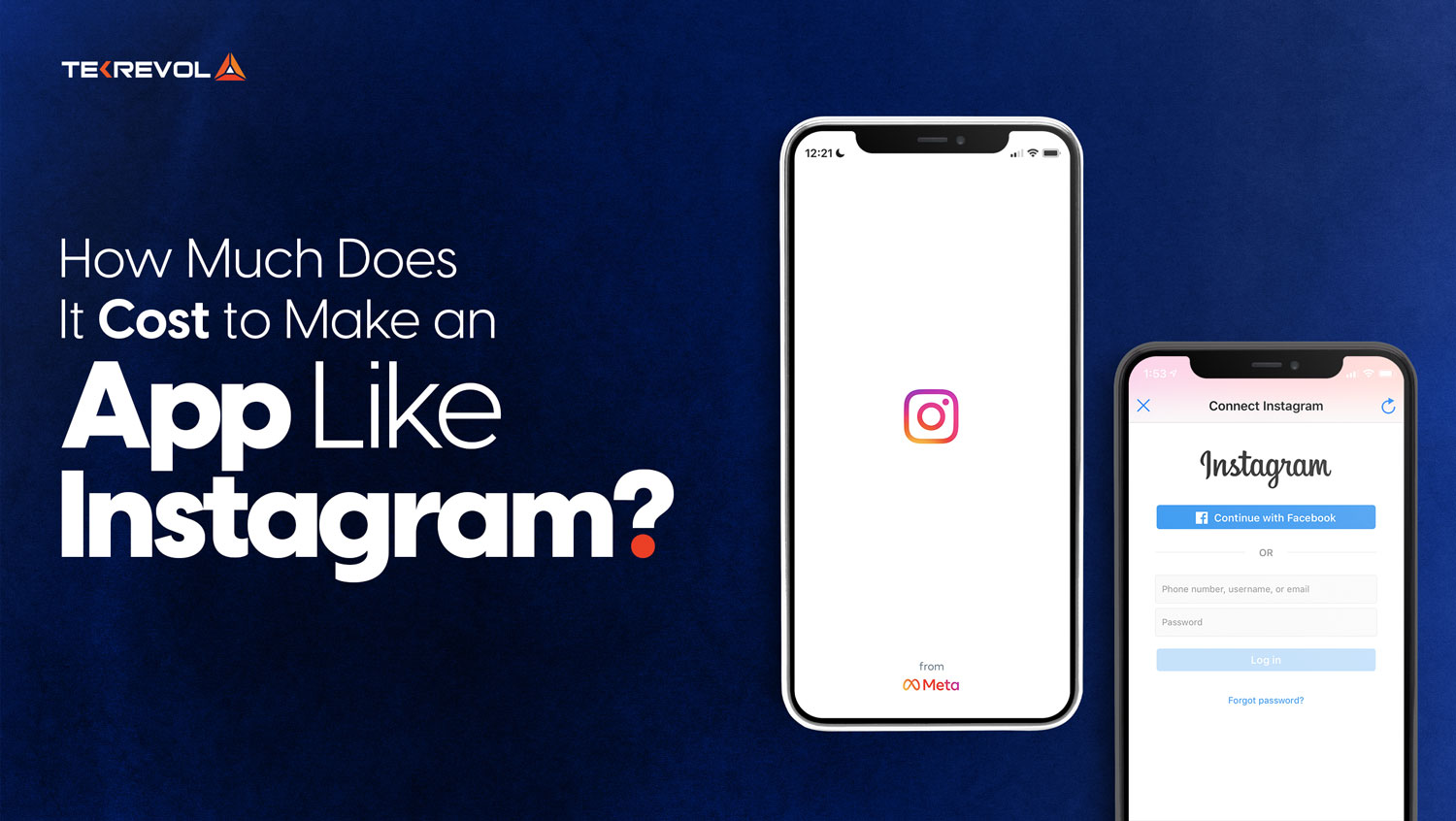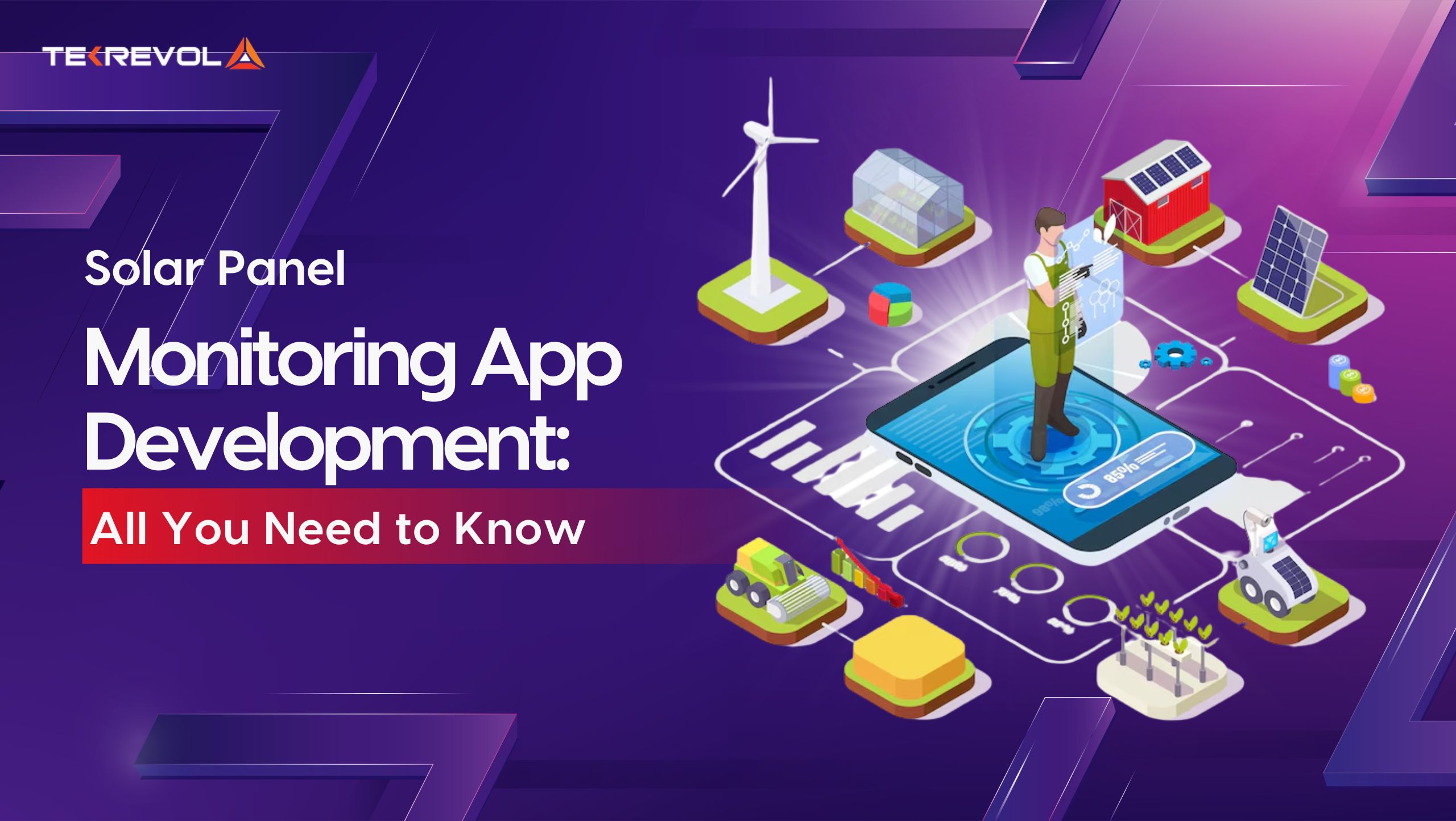Picking the right tech stack is the first step when building a mobile app. It is like choosing your toolkit for a detailed craftsmanship task. Without the right tools, even the best ideas might struggle to take shape.
App development over the years has evolved from only native options to versatile cross-platform solutions. React Native and Flutter have changed the game, giving speed and flexibility while meeting modern user demands.
But why is the choice of tool important? It affects everything from how well your app runs to how quickly it gets to market. A good tool can mean fewer bugs, happier users, and faster updates.
We break down the best tools for app development, features, and when to use them in this blog.
Let’s help you find the perfect fit for your next project!
What to Look for in App Development Tools?
Before delving straight into the best application development tools, let’s go back a notch.
Selecting the best tool is not always about the latest trends but is about what actually works best for your project’s needs.
Identifying the primary factors can actually help you make the proper decision and avoid mistakes and losses in later stages.
Here are all the factors you should keep in mind:
Platform Compatibility
Does the tool support all the platforms you are targeting? Whether it is iOS, Android, or the web, ensuring compatibility with your intended audience’s devices is important.
Cross-platform tools like Flutter shine here, as they let you create apps for multiple platforms with one codebase.
Learning Curve
Some tools are easier to learn than others. If you’re a beginner or managing a team with varied expertise, pick tools with plenty of resources, tutorials, and documentation.
Frameworks like React Native have large communities that provide learning materials to get you started.
User-Friendliness
The tool’s interface should feel intuitive. Features like drag-and-drop UI builders or real-time previews make the development process smoother, especially for non-technical team members.
Cross-Platform Support
Cross-platform development tools save time and resources. Tools like Ionic allow you to build apps that work seamlessly across different devices, ensuring a consistent user experience.
Integration Capabilities
Check if the tool integrates well with other software and APIs. For instance, Android Studio supports multiple plugins, making it easier to extend functionality or connect with third-party services.
Community Support
A strong developer community means quicker problem-solving. Tools like Xamarin and Flutter have active forums and GitHub repositories, providing solutions for most issues you’ll encounter.
Cost Efficiency
While some tools are free, others come with licensing fees. Assess your budget and consider whether the tool offers value for money. Open-source options like Apache Cordova can be a great fit for cost-conscious projects.
Once you have gone through the factors above in detail, you will be in a good position to choose tools that help you meet your objectives and also produce the best outcome for your app.
- Ready to Build Your App with the Best Tools?
- At TekRevol, our mobile app development experts are here to help you choose and implement the best tools for your app development project.
Top 10 App Development Tools in 2025
-
React Native
The first in our list of best app development tools is React Native.
React Native is an open-source framework for mobile app development.
It’s built with JavaScript and React, letting you create apps for iOS and Android using a single codebase.
React is one of the best Javascript UI libraries, and it makes it possible to build apps with a native-like user experience.
Airbnb and Instagram are among the major names using the service to deliver smooth and powerful mobile applications with consistency and high quality.
React Native makes reusable components available, making development faster and producing a uniform look and feel over the application.
What makes it stand out? Speed, flexibility, and a vast community of developers. That’s why React is one of the most preferred app development languages worldwide.
Features
- Hot Reloading
This feature allows developers to see code changes instantly without restarting the app, streamlining the development process.
- Reusable Components
React Native allows developers to reuse components, which speeds up the process while keeping the app’s design consistent across all pages.
- Strong Community Support
Its huge community will give developers so many resources, libraries, and tools that will help them deal with their applications.
- Third-Party Plugin Compatibility
React Native allows integration with third party plugins to provide an application with some additional functionality and customized features and options.
Pros and Cons
| Pros | Cons |
| One codebase for all platforms | Can struggle with performance-heavy apps |
| Rapid development with reusable components | Not always ideal for intricate native UIs |
| Extensive library and community support | Limited support for advanced custom modules |
Pricing
React Native is totally free and open-source, making it a budget-friendly option for developers.
Top Tips to Boost React Native Performance in 2025
For your app to run flawlessly on React Native, use these tips:
- Hermes: Enable the Hermes JavaScript engine. It will increase the load times and performance of your app.
- Optimize Images: Compress and resize your images to increase load times and decrease memory usage.
- Use PureComponent and React.memo: Implement this to prevent the re-rendering of components without cause, hence efficiency.
- Efficient Navigation Strategies: Select the navigation libraries that ensure optimized performance to make transitions as smooth as possible.
Implementing these strategies can lead to a more responsive and efficient React Native application.
2. Flutter
Flutter is an open-source framework by Google that simplifies the development of cross-platform apps with a single codebase.
With Flutter, you can deliver consistent experiences on iOS, Android, and web platforms effortlessly.
Its rich widget library and near-native performance make it a favorite among developers for visually appealing apps.
Used by big names like Google Pay, Flutter is undoubtedly a leader in the world of mobile app development.
Features
- Hot Reload
View real-time updates without restarting the app, significantly speeding up the development process. - Customizable Widgets
Offers a diverse set of widgets to create engaging, user-friendly app designs quickly. - Single Codebase
Build apps for multiple platforms using just one codebase, saving time and resources. - Native-Like Performance
Flutter ensures smooth animations and responsiveness that rival native apps.
Pros and Cons
| Pros | Cons |
| Fast development cycle | Larger app size compared to others |
| Strong support from Google | Limited third-party libraries |
| Excellent UI flexibility | Steeper learning curve for newcomers |
Pricing
Flutter is entirely free and open-source, making it an accessible option for businesses of all sizes.
Flutter vs. React Native: Which One to Choose?
Both Flutter and React Native are celebrated frameworks, but choosing between them can be challenging. Here’s a straightforward comparison to guide you:
| Parameter | Flutter | React Native |
| Performance | Near-native speed | Slightly slower than Flutter |
| UI Customization | Rich and fully customizable | Depends on third-party plugins |
| Community Support | Smaller but growing rapidly | Extensive and well-established |
| Hot Reload | Fast and seamless | Efficient but slower |
| Third-Party Libraries | Limited | Comprehensive |
| Ease of Learning | Steeper learning curve | Easier for JavaScript developers |
| Best For | Design-heavy, high-performance apps | Quick app launches |
When your project demands detailed design and superior performance, Flutter is a strong choice. On the other hand, React Native’s extensive ecosystem makes it perfect for teams familiar with JavaScript.
3. Xamarin
Xamarin, a Microsoft-backed platform, is a reliable choice for developing applications across iOS, Android, and Windows.
Its ability to use a single C# codebase makes it a favorite for developers aiming to streamline workflows and reduce costs.
Although official support ended in May 2024, its successor .NET MAUI ensures continuity in cross-platform development with added features.
Features
- Native User Interfaces
Access to native APIs allows Xamarin apps to deliver a genuine native experience. - C# Codebase for All Platforms
Developers can use a single language, simplifying development and reducing errors. - Integrated Testing with Xamarin Test Cloud
Perform automated testing across multiple devices effortlessly. - Azure Integration
Take advantage of Microsoft Azure’s robust cloud services for scalability.
Pros and Cons
| Pros | Cons |
| Significant code sharing | Larger app sizes |
| Near-native performance | Licensing costs for enterprise |
| Strong documentation | End of official support |
Pricing
Xamarin is free, but enterprise-level tools and features may incur costs.
Is Xamarin the Best Cross-Platform Development Tool?
“Best” depends on your project requirements, but here’s why Xamarin stands out:
- Native-like user experience through direct API access.
- Reduces development time with a high percentage of code reusability.
- Vast libraries and third-party integrations, especially with Azure.
- Open-source under the Microsoft umbrella ensures reliability and scalability.
For projects prioritizing native performance, Xamarin (or transitioning to .NET MAUI) offers unmatched versatility.
- Hire Xamarin Developers Today!
- Your app deserves the best! Hire skilled Xamarin developers today for exceptional quality and performance.
4. .NET MAUI (Multi-platform App UI)
.NET MAUI is Microsoft’s flagship cross-platform development framework, enabling developers to build native apps for Android, iOS, macOS, and Windows—all from a single C# codebase.
It’s the evolution of Xamarin.Forms, designed to deliver faster performance and an easier development workflow.
With native UI rendering and seamless integration into the .NET ecosystem, .NET MAUI is becoming a go-to choice for cross-platform development.
Features
- Single Project Structure
Target multiple platforms under one unified project, reducing setup complexity. - Hot Reload
Make real-time updates to code and see immediate results without restarting the app. - Comprehensive UI Controls
Offers platform-specific controls to deliver native-like aesthetics and functionality. - Performance Improvements
Optimized architecture ensures faster load times and smoother app performance. - Integration with the .NET Ecosystem
Access a full suite of .NET tools, including libraries for authentication, analytics, and cloud services.
Pros and Cons
| Pros | Cons |
| Unified cross-platform development | Learning curve for new developers |
| Strong Microsoft support and updates | Migration effort needed for Xamarin projects |
| Rich UI components | Limited third-party library availability |
Pricing
.NET MAUI is free as part of the open-source .NET platform. However, additional services like Visual Studio Enterprise or Azure may involve costs.
Should You Choose .NET MAUI for Your App?
.NET MAUI is ideal for developers and teams invested in the Microsoft ecosystem.
Why choose .NET MAUI among other best app development tools:
- Simplified project management for multiple platforms.
- Native UI performance without needing separate codebases.
- A future-proof choice with active support and updates from Microsoft.
For anyone upgrading from Xamarin or exploring robust cross-platform tools, .NET MAUI offers a comprehensive and streamlined development experience.
5. Ionic
Ionic is a popular default framework developers use to build a cross-platform app in a quick and efficient manner.
It uses web technologies like HTML, CSS, and JavaScript so you can also make it once deployable on iOS, Android, and web.
What sets it apart? Its library of customizable UI components that mimic native app designs for a seamless user experience.
Also, it supports famous frameworks such as Angular, React, and Vue.js, which is versatile with any development stack.
That’s why Ionic is one of the cross-platform app development tools to trust.
Best Features
- Cross-Platform Development
Build once, deploy on Android, iOS, and web platforms, drastically cutting development time. - Rich Library of UI Components
Offers pre-built, customizable components that replicate native UI patterns, enhancing user experience. - Integration with Popular Frameworks
Supports Angular, React, and Vue.js, giving developers flexibility to use their preferred tools. - Comprehensive Documentation
Features detailed guides, tutorials, and a thriving community for consistent developer support. - Cordova and Capacitor Plugins
Access device-specific features like camera and geolocation through a robust plugin ecosystem.
Pros and Cons
| Pros | Cons |
| Fast development with web tech | Slight performance drop compared to native apps |
| Strong plugin ecosystem | Dependency on web views can impact responsiveness |
| Flexible framework integration | Advanced native features might require extra effort |
Pricing
Ionic is free for open-source use. Premium features, like app monitoring and live updates, are available under enterprise plans.
Ionic vs. React Native: Which to Choose?
Choosing between Ionic and React Native boils down to your project’s goals.
- Choose Ionic if: You want quick development with familiar web technologies and flexibility in frameworks.
- Choose React Native if: Performance and native app feel are top priorities for your project.
Pro Tip: Evaluate your app’s complexity and target audience to make the right call.
6. Android Studio
Android Studio is Google’s official IDE for Android development, which comes with everything needed to develop apps with rich features.
It’s integrated with powerful advanced tools, like a smart code editor, real-time error detection, and powerful emulator testing applications across devices.
Its smart code editor and real-time error detection ensure that developers can write clean, high-quality code efficiently.
Its drag-and-drop layout editor simplifies UI design, while Gradle’s build system allows custom configurations.
For Android apps, it’s hard to beat Android Studio’s comprehensive toolkit.
Best Features
- Intelligent Code Editor
Provides real-time code suggestions, syntax highlighting, and advanced error detection to streamline development. - APK Analyzer
Lets developers inspect APK contents, helping reduce app size and troubleshoot performance issues. - Layout Editor
A drag-and-drop interface for designing responsive UIs, complete with real-time previews on different devices. - Flexible Build System
With Gradle, developers can configure builds for various devices and performance needs. - Emulator
Simulates a wide range of devices, allowing thorough testing without needing physical hardware.
Pros and Cons
| Pros | Cons |
| Comprehensive toolset | Resource-heavy, requiring high-performance hardware |
| Official Google support | Limited to Android app development |
| Frequent updates and strong community | May have a steep learning curve for new developers |
Pricing
Android Studio is free, but developers may incur Google Play fees for app distribution.
Optimizing Performance in Android Studio
For smoother workflows in Android Studio:
- Allocate more memory in settings to speed up the IDE.
- Disable plugins that aren’t being used.
- Use profiling tools to optimize your app’s CPU and memory usage.
Android Studio’s robust features make it a go-to tool for Android developers focused on building top-quality apps.
- Turn your vision into reality!
- Your app deserves excellence! Hire skilled Android Studio developers today for top-quality, reliable mobile applications.
7. Xcode
Xcode is Apple’s official IDE (Integrated Development Environment) for building apps across all Apple platforms—iOS, macOS, watchOS, and tvOS.
It’s the go-to tool for developers creating apps for Apple devices, offering everything you need to design, code, test, and debug apps in one place.
What makes Xcode stand out? Its seamless integration with Apple’s ecosystem. From SwiftUI for building modern UIs to Instruments for performance tuning, Xcode is packed with features that make app development faster and more efficient.
If you’re building apps for Apple devices, Xcode is non-negotiable.
Best Features
- Interface Builder
A visual tool for designing user interfaces with real-time previews. Perfect for creating polished, responsive designs without writing a single line of code.
- SwiftUI Integration
Build declarative UIs with SwiftUI, making it easier to create apps that look great on all Apple devices.
- Instruments
A powerful suite of tools for performance analysis and debugging. It helps you find and fix problems like memory leaks or slow app performance.
- Simulator
Test your apps on virtual devices running different versions of iOS, watchOS, and tvOS. No need for physical devices during early development stages.
- Source Control
Built-in Git support for version control and collaboration. It is easy to have track changes and collaborate with teams.
Pros and Cons
| Pros | Cons |
| Official Apple development environment | Exclusive to macOS, limiting accessibility |
| Seamless integration with Apple services | Can be resource-intensive on older hardware |
| Regular updates aligned with Apple platform releases | Steep learning curve for newcomers to Apple’s ecosystem |
Pricing
Xcode is free to download and use, but you’ll need a macOS device to run it.
Why Choose Xcode?
If you’re developing apps for Apple devices, Xcode is the only choice. Its tight integration with Apple’s ecosystem ensures your apps are optimized for performance and aligned with Apple’s design standards.
8. Appy Pie
Appy Pie is a no-code platform that lets anyone create mobile apps without needing to write a single line of code.
It’s perfect for small businesses, entrepreneurs, or anyone who wants to build an app quickly and affordably.
The standout feature? Its drag-and-drop interface and pre-built templates make app development as easy as pie (pun intended).
This works well to develop simple applications, but in such complex and rich feature applications you may not use OutSystems with the best view.
Best Features
- No Coding Required:
Perfect for non-developers. Just drag, drop, and customize your app. - Drag-and-Drop Interface:
An intuitive design tool that lets you build apps visually. No technical skills needed. - Pre-Built Templates:
Choose from a variety of templates tailored to different industries, from e-commerce to fitness. - Third-Party Integrations:
Connect your app to services like Google Analytics, social media platforms, and Mailchimp for added functionality. - Multi-Language Support:
Build apps that cater to a global audience with support for multiple languages.
Pros and Cons
| Pros | Cons |
| User-friendly interface for beginners | Limited customization compared to traditional development |
| Cost-effective with affordable subscription tiers | Dependence on platform templates may restrict uniqueness |
| AI-powered tools for design and content generation | May not support complex app functionalities |
Pricing
Appy Pie has a free version that accommodates all essential features. The paid editions start from around $18 for a month; hence it is great to use in smaller businesses.
Is Appy Pie Good for You?
Appy Pie is the one-stop solution if you need something real quick and are not even techie.
However, if it is a bit complex application or you are requiring some sophisticated functionality, there is always an option to select an alternative or consider services of the mobile app development company.
9. OutSystems
OutSystems is a low-code platform designed to help business organizations build faster and more effective apps.
Its ideal for those companies that want to scale quick or deliver their apps under really strict deadlines.
The stand-out feature? It possesses AI-powered assistant and visual development tools that allow both developers and non-developers to build apps.
Best Features
- Visual Development Interface:
A drag-and-drop interface for designing user interfaces, workflows, and data models. - Full-Stack Development:
Build both front-end and back-end components within a single environment. - Reusable Components:
A library of pre-built components that can be reused across projects, saving time and effort. - Integration Capabilities:
Seamlessly connect with existing systems, databases, and third-party services through APIs. - AI-Assisted Development:
Get intelligent suggestions and automation to speed up the development process.
Pros and Cons
| Pros | Cons |
| Rapid app development reduces time-to-market | Licensing costs may be high for small businesses |
| Scalable to accommodate growing business needs | Learning curve for platform-specific conventions |
| Strong community support and regular updates | Limited customization compared to traditional coding |
Pricing
OutSystems has a free plan which suits small projects. Enterprise plans are based on quotes depending on your requirements.
Is OutSystems Right for Your Business?
If you’re looking for an alternative that can help you deliver apps quickly and scale to your business needs, OutSystems is something you can consider.
And again for highly custom-built apps you should look further elsewhere or else meet a development house of the Mobile App development business.
9. AppGyver
No-code and amazing platform used by you that develop professional quality for web-based, mobile-appearing Apps absolutely without a single code of writing.
Used for amateurs to start making simple apps up-and-running from A to Z – perfect startup products or other things that appear soon.
What makes AppGyver stand out? Its Composer Pro tool allows you to design complex user interfaces with ease, while Logic Flow Programming lets you add advanced functionality—all through a visual interface.
If you’re looking for a cost-effective and user-friendly way to build apps, AppGyver is a strong contender.
Best Features
- Composer Pro:
A visual builder that lets you create complex UIs with drag-and-drop simplicity. Ideal for designing apps that look and feel professional. - Logic Flow Programming:
Add advanced logic to your app using a visual interface. No coding required, making it accessible to non-developers. - Pre-Built Components:
Pick from a large library of pre-built components to speed up development. From buttons to forms, everything you need is right at your fingertips. - Data Integration:
Connect your app to various data sources and APIs seamlessly. Whether it’s a database or a third-party service, AppGyver makes integration easy. - Cross-Platform Deployment:
Build once and deploy to iOS, Android, and web platforms. Saves time and effort while reaching a wider audience.
Pros and Cons
| Pros | Cons |
| No coding required—great for non-developers | May not support highly complex or unique functionalities |
| Free tier available, making it cost-effective | Limited customization compared to traditional development |
| Active community and support resources | Performance may vary depending on app complexity |
Pricing
AppGyver offers a free tier for basic use. Premium plans start at $49/month, making it an affordable option for startups and small businesses.
AppGyver vs. Traditional Development: Which is Right for You?
AppGyver is ideal if:
- You need to build apps quickly without coding.
- You’re a startup or small business with limited resources.
- You want to prototype or create simple apps without a steep learning curve.
However, if your app requires:
- Highly specialized features (e.g., complex animations or advanced native functionalities).
- Custom performance optimizations.
- Unique, brand-specific designs.
…then traditional development or working with a mobile app development company might be a better fit.
11. Apache Cordova (PhoneGap)
Last on our list is Apache Cordova, formerly known as PhoneGap.
It’s an open-source framework that lets you build cross-platform apps using standard web technologies like HTML, CSS, and JavaScript.
What really makes Cordova unique? That is, it contains your web application in a native container, while providing access to device-specific features like the camera, GPS, and file system, without you having to code natively.
If you are an existing web developer looking to switch into mobile, Cordova provides a great base.
Best Features
- Cross-Platform Development:
Write one codebase and deploy it across iOS, Android, and Windows. Saves time and effort while reaching a wider audience. - Plugin Architecture:
Access native device functionalities through Cordova’s extensive plugin library. From the camera to geolocation, plugins make it easy to add advanced features. - Command-Line Interface (CLI):
A unified CLI for creating, building, and deploying apps. Simplifies the workflow and ensures consistency across platforms. - Integration with Web Technologies:
Use HTML, CSS, and JavaScript—skills you already have—to build mobile apps. Lowers the learning curve for web developers. - Open-Source Community:
Backed by a vibrant community of developers. Get access to extensive documentation, plugins, and continuous improvements.
Pros and Cons
| Pros | Cons |
| Code reuse across multiple platforms | Performance may lag compared to fully native apps |
| Leverages existing web development skills | Limited access to advanced native features |
| Reduces development and maintenance costs | Dependency on plugins for native functionality |
| Active community support with extensive resources | Potential for inconsistent user experience across devices |
Pricing
Apache Cordova is free and open-source, making it a cost-effective choice for developers.
Is Apache Cordova the Right Choice for Your App Development Needs?
Apache Cordova is perfect if:
- You’re a web developer looking to transition into mobile app development.
- You need to deploy apps across multiple platforms without writing separate codebases.
- You want to reduce development and maintenance costs.
However, if your app requires:
- High-performance graphics or complex animations.
- Advanced native functionalities that plugins can’t provide.
- A fully native user experience.
…then you might want to explore native development or other frameworks like Flutter or React Native.
Ready to Develop Your Next Mobile App?
Choosing the right app development tools can feel overwhelming. Now, you might think of so many options such as React Native, Flutter, or Xcode, and how you pick the right one for your project. And even after selecting the tools, ensuring your app’s success is another challenge.
TekRevol comes to your rescue.
TekRevol has helped businesses develop 500+ successful apps and served 300+ clients all over the world as a prominent mobile app development company.
We have professionals who can handle everything, be it building an app for a fintech product, an e-commerce platform, or any customized solution.
Being a company that has experience working with cutting-edge technologies for over 5+ years, TekRevol helps your app outshine the cutthroat competition of today’s marketplace.
Why Choose TekRevol?
- Expertise in mobile application development tools such as Flutter, React Native, and more.
- Delivering scalable and high-performance applications.
- End-to-end support: from ideation to launch and beyond.
Do not let the complexity of how to create an app hold you back. Let’s partner together with TekRevol to bring your vision into reality.
Get started now? Contact TekRevol today to build something amazing together!!
- Ready to innovate with a Future-Ready Tech Stack?
- Hire expert mobile app developers that hone the latest mobile app development trends and bring your vision to life seamlessly!

 64 Views
64 Views April 18, 2025
April 18, 2025








